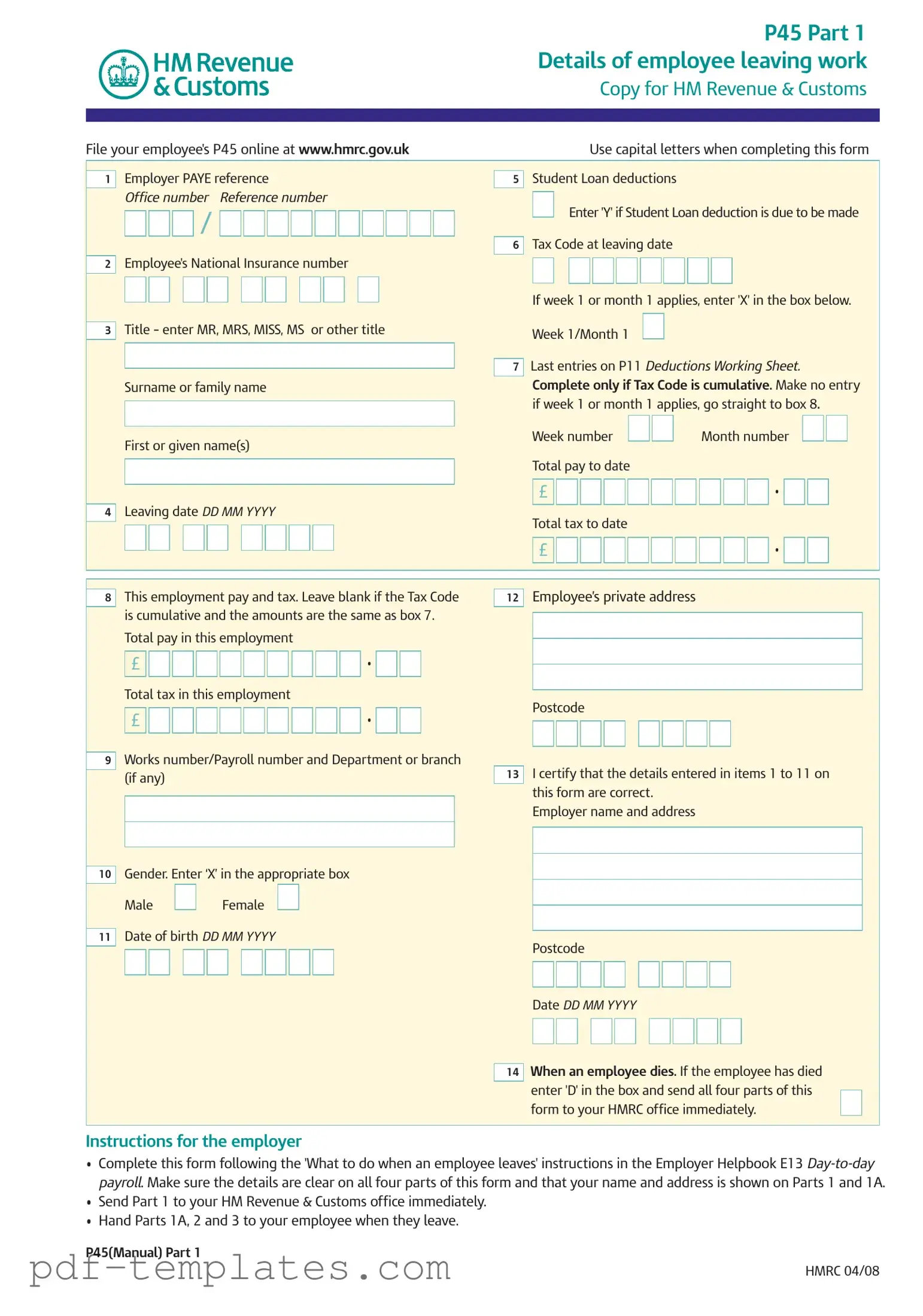The P60 form is a document that summarizes an employee's total pay and deductions for the tax year. It is issued by employers at the end of the tax year, unlike the P45, which is provided when an employee leaves a job. Both forms serve to inform employees about their earnings and tax contributions, but the P60 covers the entire year while the P45 focuses on the period of employment that has just ended. Employees use the P60 for tax returns and to verify their income for various purposes, making it an essential document for financial record-keeping.
To ensure a smooth transfer of property, utilizing the appropriate legal documents is essential; one such tool is the Quitclaim Deed. This document, particularly in California, is designed to clarify ownership and address title issues without the warranties that come with other types of deeds. For those interested in more details, you can refer to the resource available at https://formcalifornia.com/, which provides valuable information on how to properly manage property transfers.
The P11D form is used to report expenses and benefits provided to employees by their employer. Similar to the P45, it is related to an employee's tax situation but focuses specifically on non-cash benefits, such as company cars or health insurance. Employers must submit the P11D to HM Revenue & Customs (HMRC) annually, detailing the taxable benefits provided to each employee. Both forms are crucial for tax calculations, but while the P45 indicates what an employee earned and paid in tax upon leaving, the P11D outlines additional benefits that may affect their overall tax liability.
The P60U form serves a similar purpose to the P60 but is specifically for employees who have been paid under the PAYE system but do not receive a P60 because they have not been employed for the full tax year. This document helps those individuals consolidate their tax information for the year. Like the P45, it is important for tax purposes, as it provides a summary of earnings and taxes paid, enabling employees to claim refunds or adjust their tax situations appropriately.
The P85 form is used when an individual leaves the UK to live or work abroad. It allows them to claim a tax refund if they have overpaid taxes during their time in the UK. Similar to the P45, the P85 is concerned with tax implications upon leaving a job, but it specifically addresses international moves. Both forms are critical for ensuring that individuals manage their tax responsibilities correctly, whether they are transitioning to a new job within the UK or relocating overseas.
The P50 form is used to claim a tax refund when someone stops working and has paid too much tax. This form is similar to the P45 in that it addresses tax matters related to employment cessation. While the P45 provides details about the employment that has ended, the P50 is a request for a refund based on the tax paid during that employment. Both documents are essential for individuals who need to reconcile their tax payments after leaving a job.
The P2 form is a notice of coding issued by HMRC that informs employees about their tax code and how it affects their pay. It is similar to the P45 in that both documents relate to an individual's tax status. The P2 provides essential information that can impact how much tax is deducted from an employee's earnings, while the P45 summarizes what has already been earned and taxed. Both are crucial for understanding tax obligations and ensuring accurate payroll processing.
The P14 form is now obsolete but was previously used to report an employee's earnings and deductions to HMRC at the end of the tax year. It served a similar function to the P60 and P45, providing a summary of earnings and taxes paid. Although it is no longer in use, the P14 was important for employees to understand their tax position, much like the P45, which details earnings and tax contributions upon leaving a job.
The P46 form is used by employers when they take on new employees who do not have a P45. This document helps employers determine the correct tax code for the new employee. Similar to the P45, which is used when an employee leaves a job, the P46 assists in managing tax responsibilities but focuses on new hires. Both forms are essential for ensuring that tax deductions are accurate and reflect the employee's current situation.
